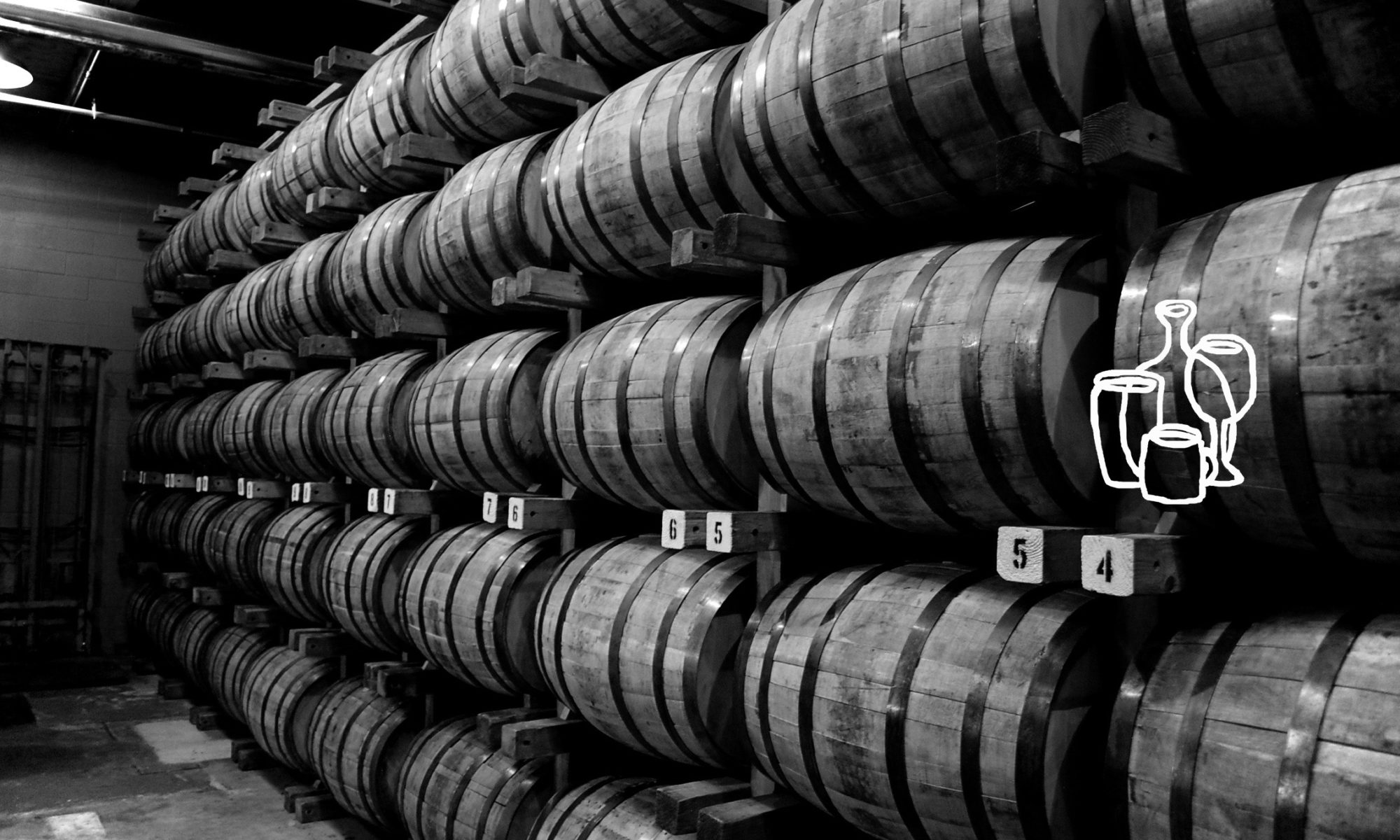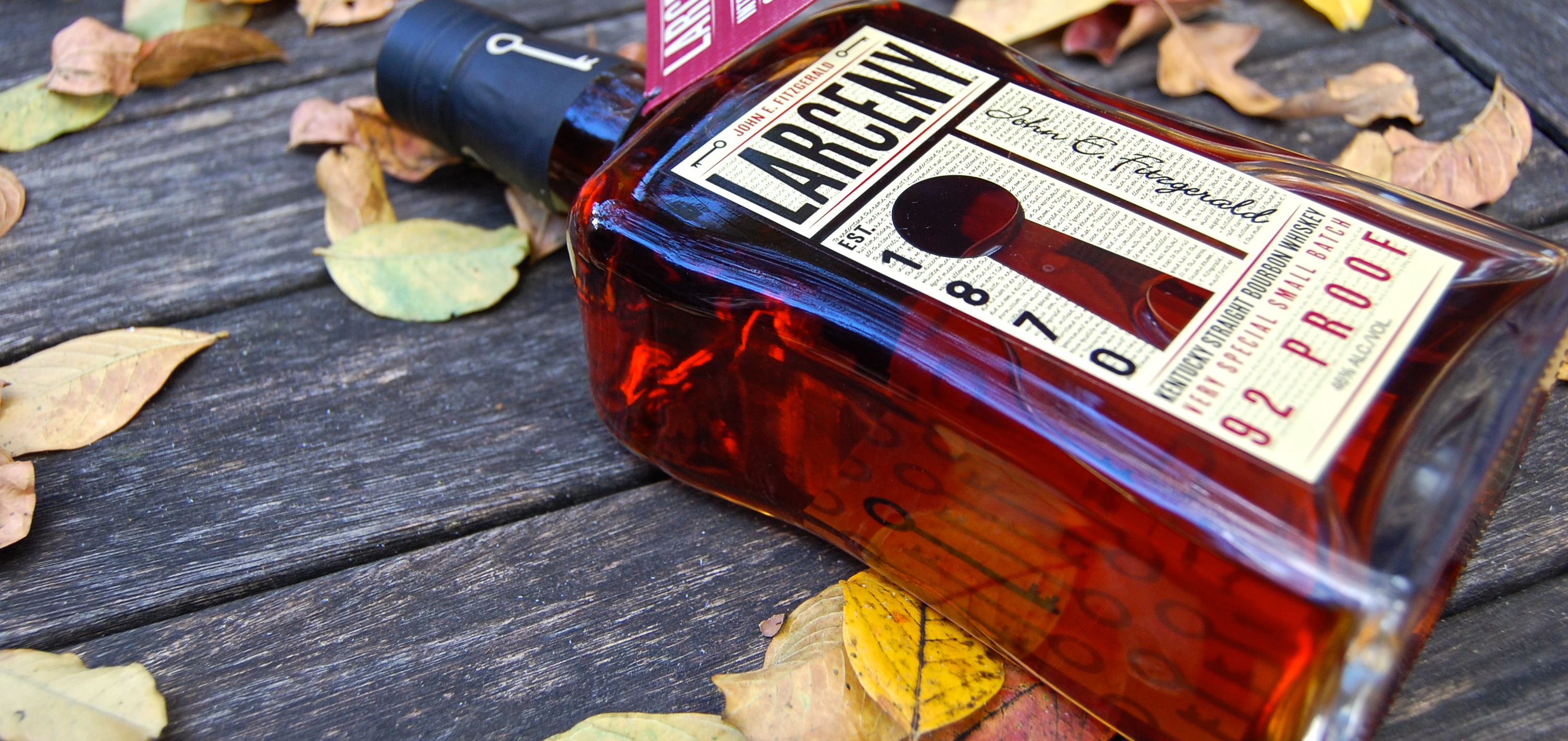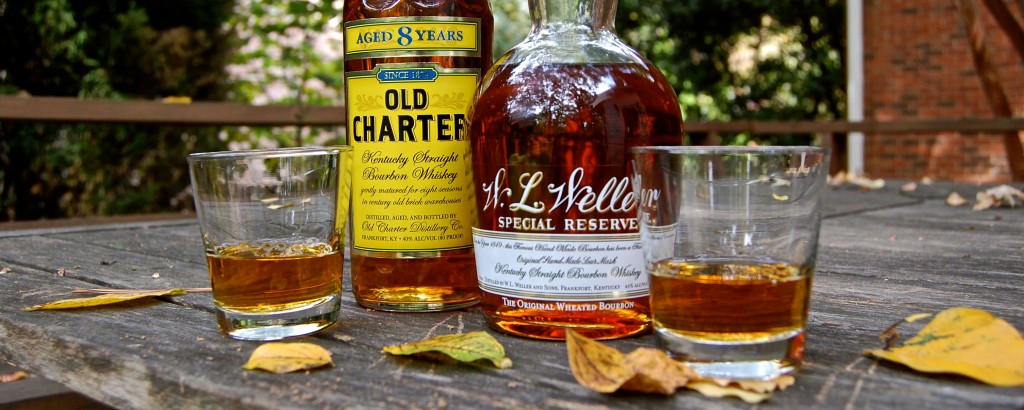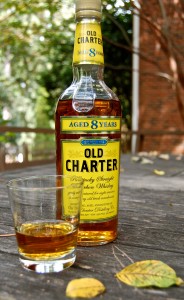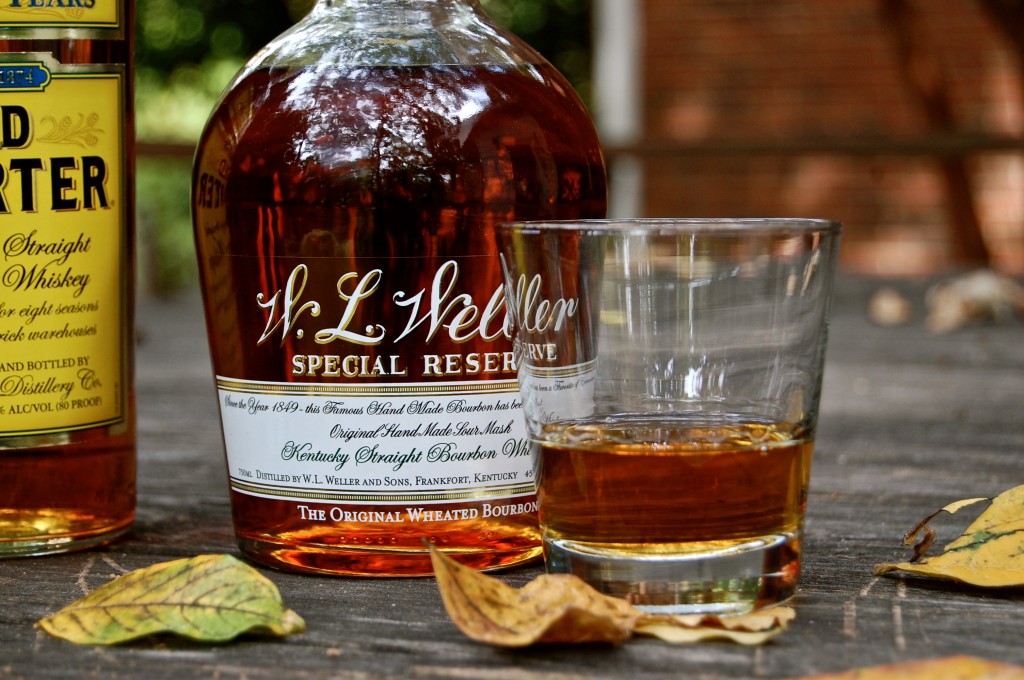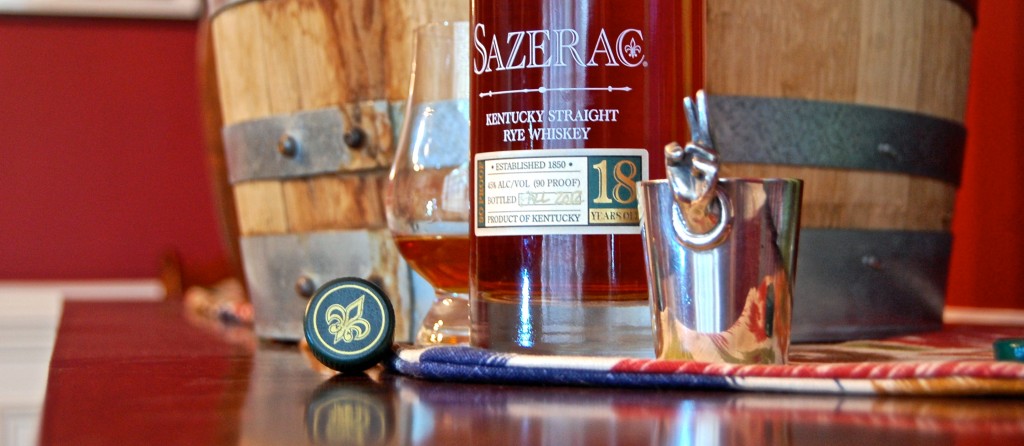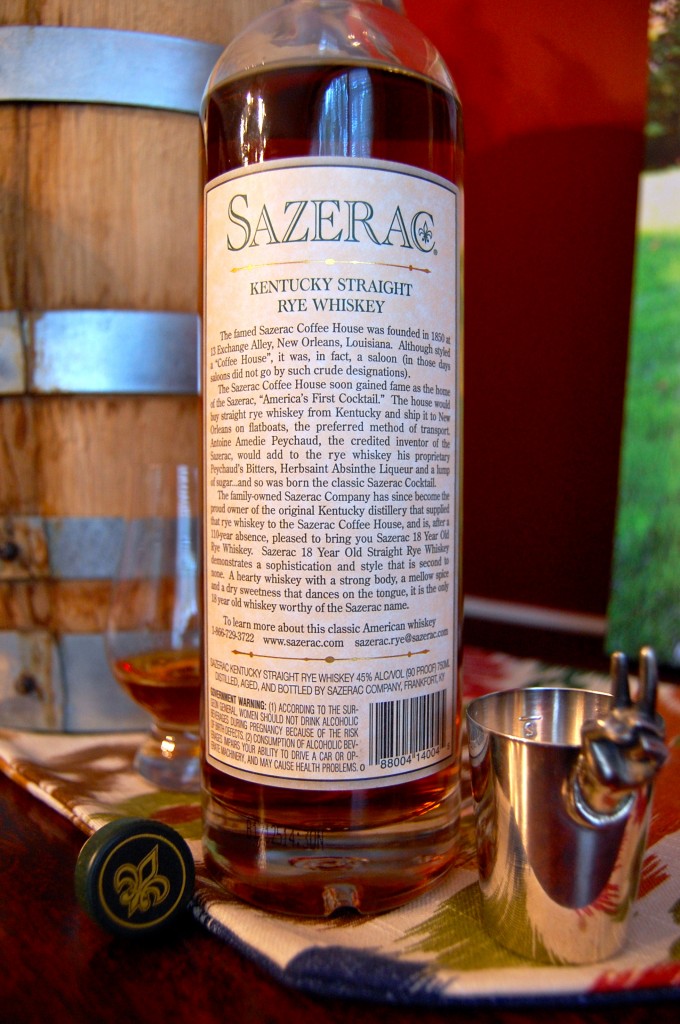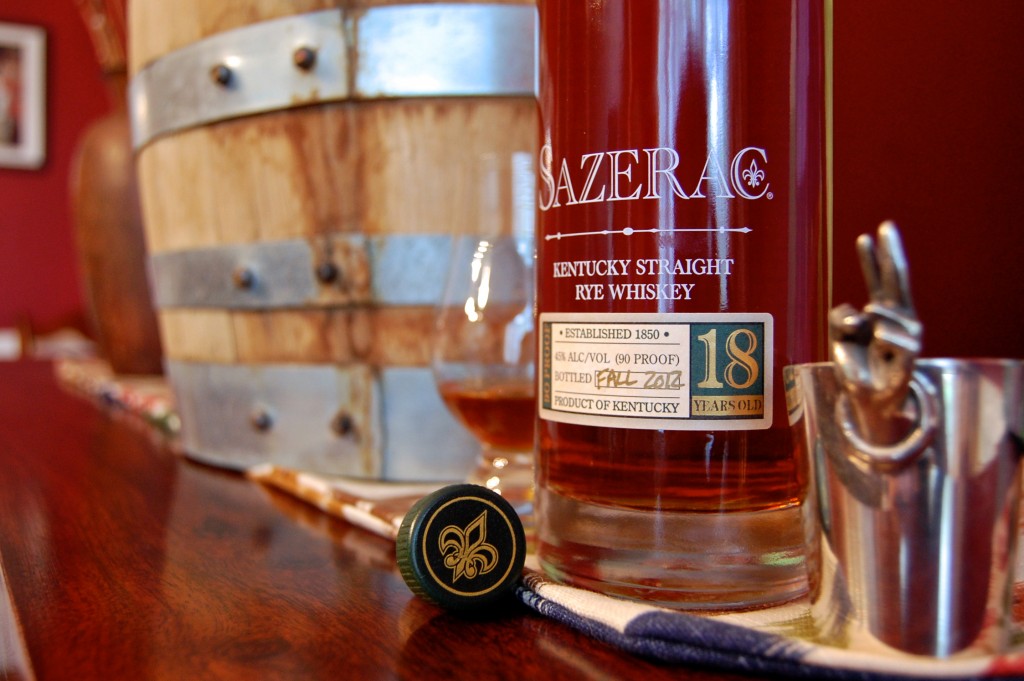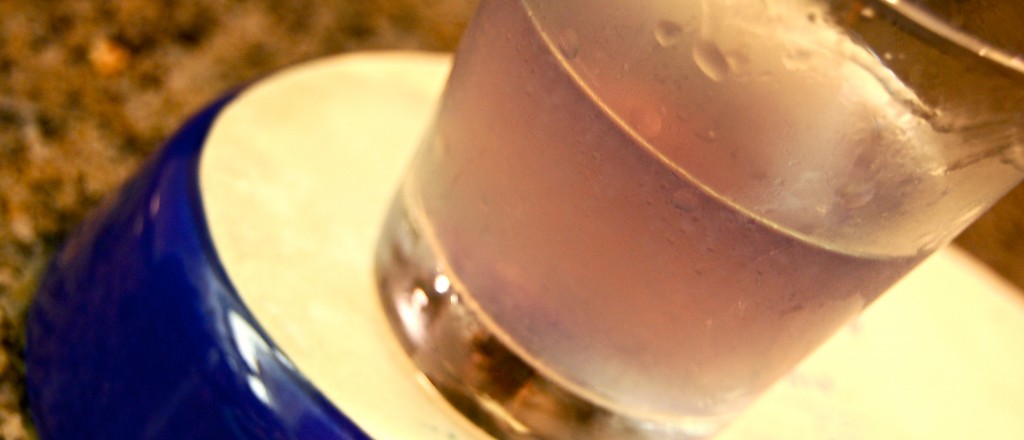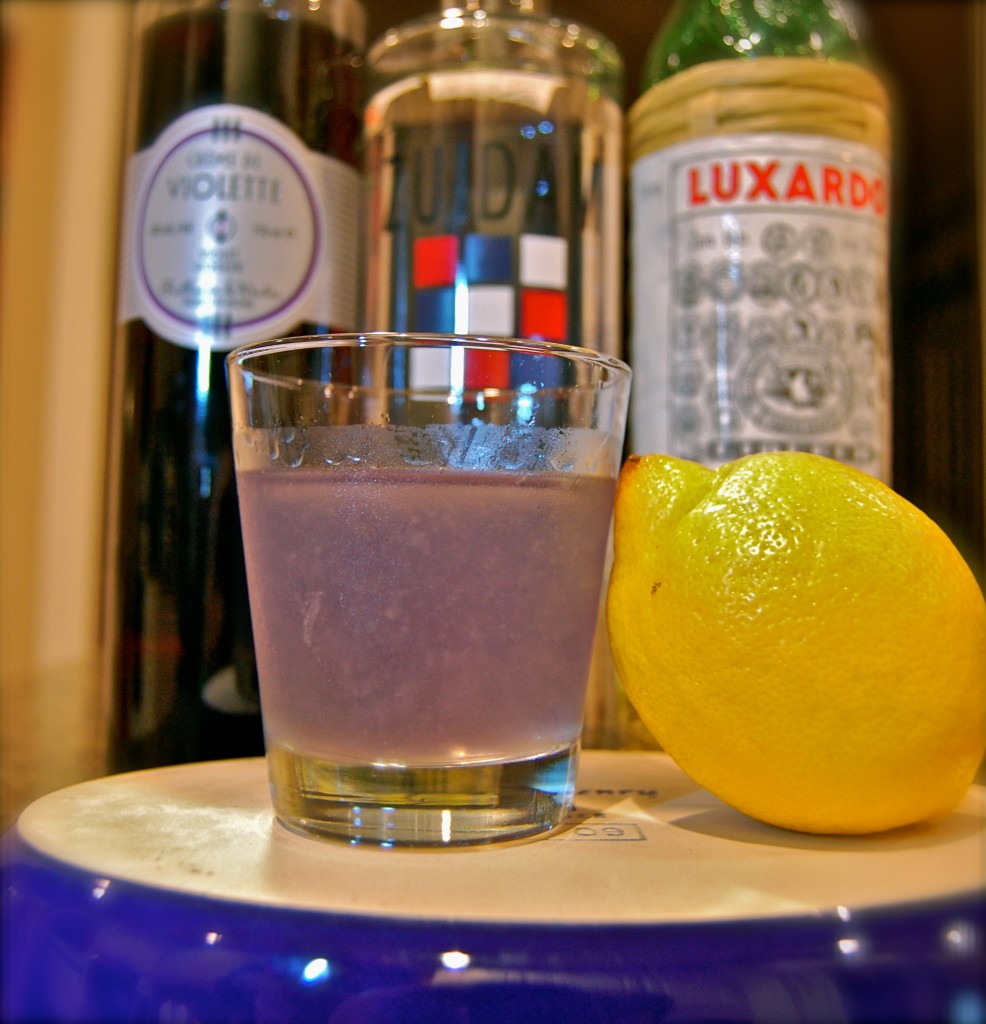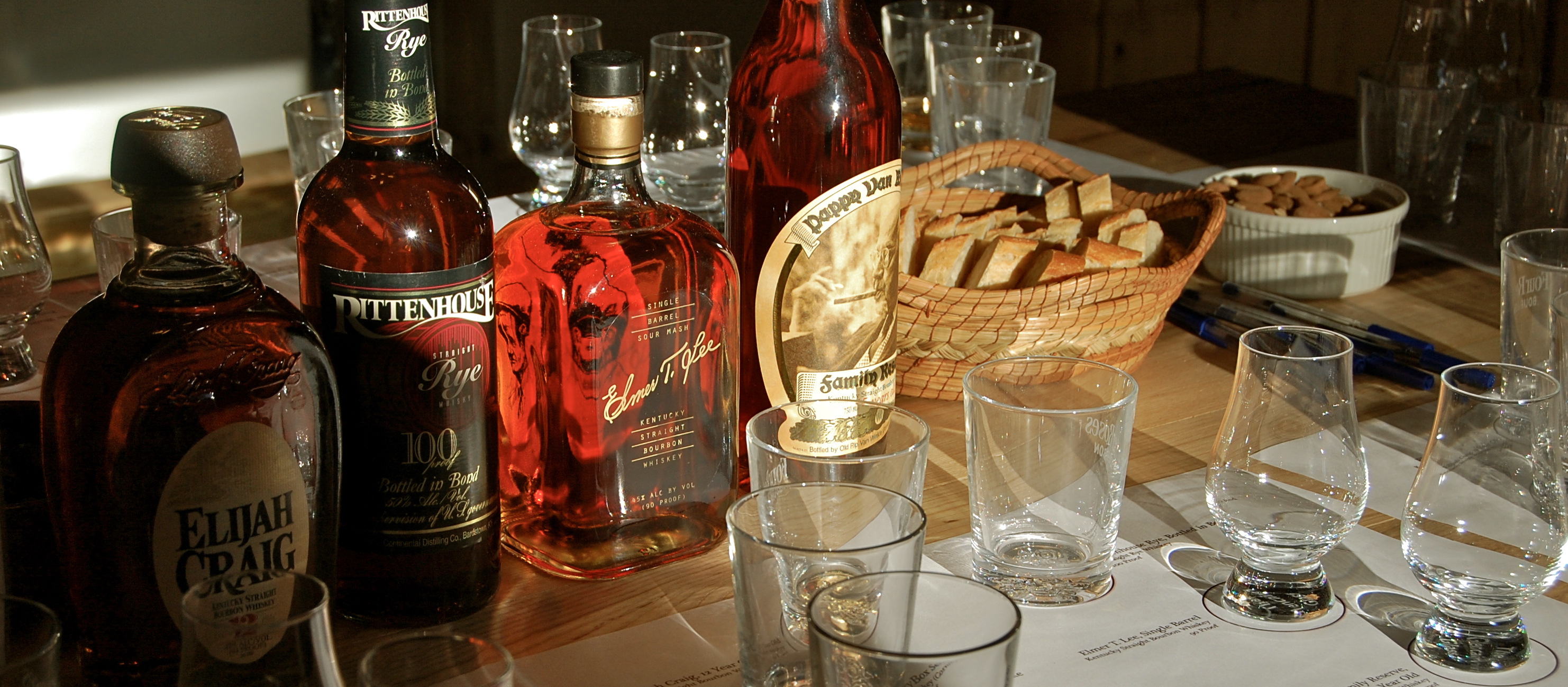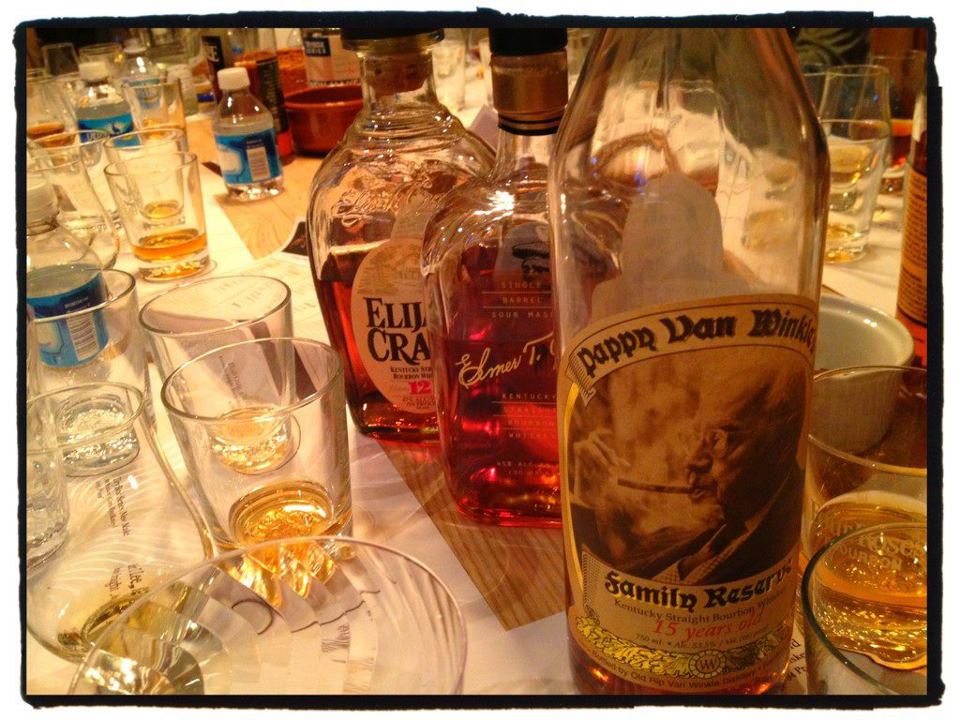As I was reading up on the new John E. Fitzgerald Larceny bourbon from Heaven Hill, I saw it suggested that this was developed to compete with Maker’s Mark since both are “wheated” bourbons. Think about it… do most whiskey drinkers have any clue if their bourbon is “wheated” or not??? (The term “wheated” refers to bourbons whose mash bill includes wheat instead of rye as a secondary grain after the primary corn – and there are relatively few wheated bourbons on the market.) I’d bet only a very small fraction of Maker’s Mark drinkers know or care that their whisky is a wheated one. And if they do know that and/or care about it, there’s a good chance they’re pretty into their Maker’s Mark and not likely to switch to Larceny.
Now, W.L. Weller drinkers are a bit more likely to have a clue that their bourbon is wheated, since Weller actually talks about being “the original wheated bourbon” on their label. And some folks probably know that Pappy Van Winkle is a wheated bourbon since they’re investing a lot of time and money into obtaining a bottle, but I bet there are just as many people that have a bottle of Pappy and only know that it’s damn good bourbon (Pappy also bears no mention of wheat on their label).
It seems the team behind Larceny at Heaven Hill agrees with me – since you will not find the word “wheat” anywhere on their front or back label. It’s clearly not a primary selling point to consumers. What Larceny is pushing is the fact (or a not-quite-fact?) that Larceny is “small batch” and “smooth,” since those are words that either mean something to consumers or at least lend an air of desirability to the bourbon.
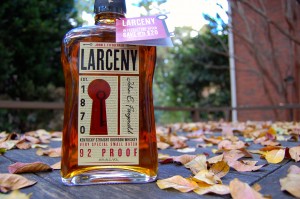 Heaven Hill has also gone fancy with their marketing of this new brand, with a much more contemporary look and a rather elaborate backstory. The story goes that one Mr. John E. Fitzgerald was not actually distilling bourbon, but was pilfering from the best barrels of bourbon under his watch as a treasury agent long ago (thus the name “Larceny”). Old Fitzgerald, the bourbon brand that Mr. Fitzgerald started, dates back to the late 1800s, and was for some time made at the renowned Stitzel-Weller distillery (AKA the source of the golden age of Pappy Van Winkle production) before changing hands and moving over to the (also famous) Bernheim Distillery as part of Heaven Hill.
Heaven Hill has also gone fancy with their marketing of this new brand, with a much more contemporary look and a rather elaborate backstory. The story goes that one Mr. John E. Fitzgerald was not actually distilling bourbon, but was pilfering from the best barrels of bourbon under his watch as a treasury agent long ago (thus the name “Larceny”). Old Fitzgerald, the bourbon brand that Mr. Fitzgerald started, dates back to the late 1800s, and was for some time made at the renowned Stitzel-Weller distillery (AKA the source of the golden age of Pappy Van Winkle production) before changing hands and moving over to the (also famous) Bernheim Distillery as part of Heaven Hill.
It looks like Heaven Hill is trying to launch a brand that will resonate with today’s consumers more than their not-very-well-known Old Fitzgerald, and it’s likely that they’re using the same mash bill and production stock for the two lines. It’s been stated that the bourbon in Larceny ranges from six to twelve years of age (there’s no age statement on the label), which gives Heaven Hill a lot of flexibility to still work within the nebulous notion of “small batch” (they have said that each batch comes from “100 or fewer barrels that have been selected from the 4th, 5th and 6th floors of Heaven Hill’s open rick warehouses in Nelson County, Kentucky”) and keep a consistent taste profile for Larceny.
My local liquor store has Larceny at $18, with a $10 rebate, so for $8 I didn’t mind taking a shot at this at all. If you want to talk wheated bourbon comparisons, I think Larceny’s closest competitors are likely the W.L. Weller Special Reserve and 12 year old, both of which are priced very competitively and are very good bourbon values.
With that said, how does Larceny taste??? Is it exceptionally “smooth”? Is it a “steal” at $8 with the rebate? At $18?? How about $25???
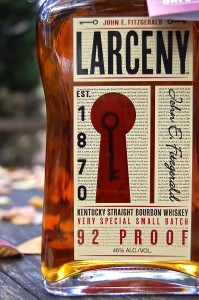 John E. Fitzgerald LARCENY
John E. Fitzgerald LARCENY
Kentucky Straight Bourbon Whiskey
Very Special Small Batch
92 Proof
Approx. $18 – $25 retail (currently available with a $10 rebate)
Tasting Dates: October 18-28, 2012
Larceny pours a pale pumpkin brown in color (it’s October, I’m allowed at least one pumpkin reference). Let me say up front that this bottle took a few days after initial opening to get going – my first few tastes were not very impressive, but with each successive tasting over the past week and a half, Larceny got a bit better.
When you give it a sniff, you’ll find some nice notes along the lines of a spiced chai tea, cinnamon, cardamom, honeyed undertones. Raisin and prune notes are hiding in the background. I do get a somewhat unpleasant whiff of wood that kicks things out of balance, though. “Smooth” is not the word I would use to describe Larceny based on the nose, but maybe I just don’t care for wheated bourbons of this age range since I think the same of the Weller Special Reserve nose, too.
Larceny pours a bit thin – that’s not a knock, just the way it is. Sipping this, I get an overall impression of butterscotch and cinnamon red hots, starting right at the entry and then building as it warms through the finish. There’s a deep caramel in the middle, and sharp hits of resin-y wood notes here and there, which I find a bit harsh, almost astringent. Again, as I’ve tasted this over time, those harsh notes have mellowed out and the red hot butterscotch has strengthened, but there’s still something to this bourbon that does not shout “smooth” to me. And, overall, I don’t find it as complex as I would like for a bourbon priced around $20.
One way to amp up the smoothness of Larceny is to add water or ice, and I must say that I prefer to do so with Larceny rather than sip it neat. 92 proof is not that high, but a bit of water helps smooth things out and pushes the butterscotch more to the forefront, not adding complexity, but definitely bringing out the smooth sweetness. I also see this is a better cocktail bourbon (also like the Weller Special Reserve) than a sipping bourbon.
You can probably tell I’m not overly impressed with Larceny, so I’ll give it a Good Stuff. And if you can nab a bottle while it’s on rebate, I do think it’s worth a shot to see if you like this style of wheated bourbon. For a similar price, I definitely prefer the Weller Special Reserve, and it’s actually several bucks cheaper (unless you have that Larceny rebate, which makes it more of a wash).
So is Larceny a steal? At $8 after rebate, yes. At $18? Not quite a steal, despite the name.
*******************************
* Thirsty South Rating Scale:
Wow – among the very best: knock-your-socks-off, profound, complex liquid gold!
Excellent – exceptional in quality and character, worth seeking out, highly recommended
Good Stuff – solid expression of its type/varietal, enjoyable and recommended
Fair – fairly standard or exhibiting obvious though minor flaws
Avoid – move away folks, nothing to see here, a trainwreck
